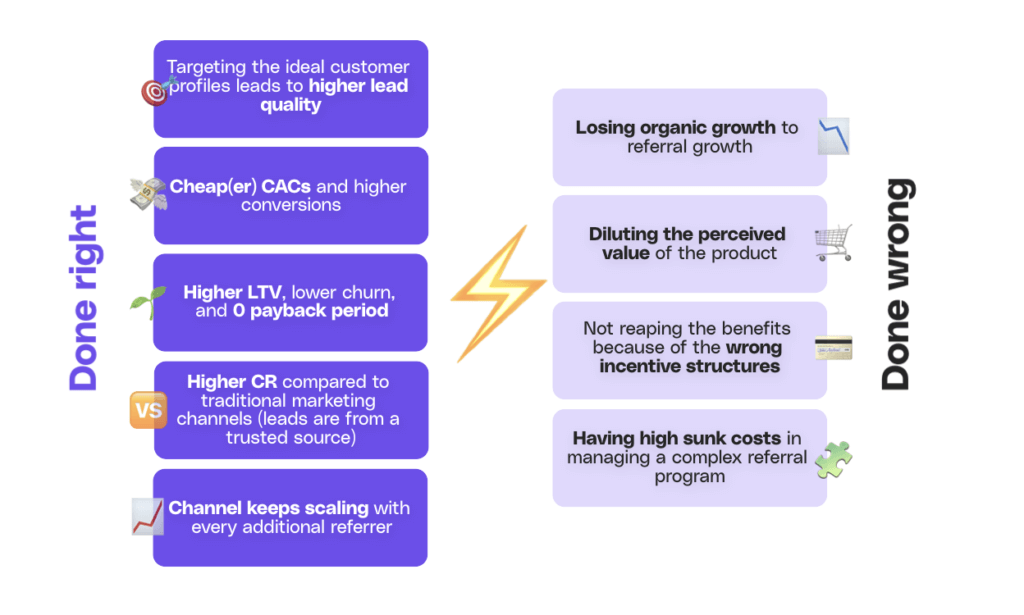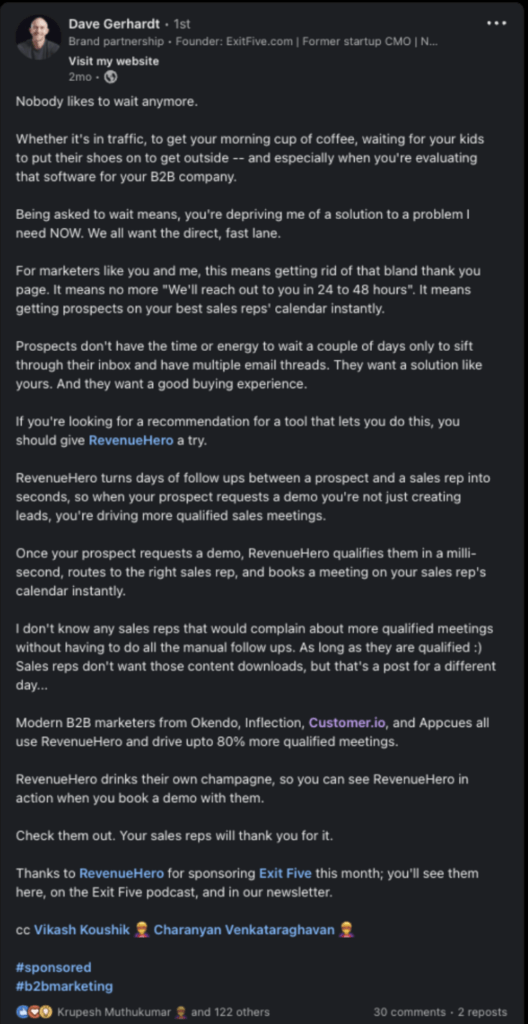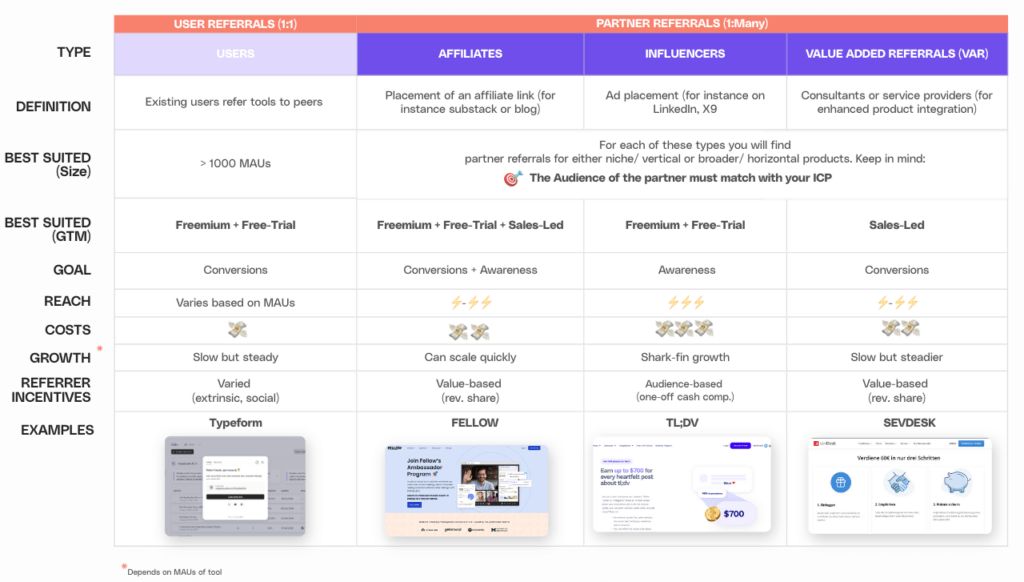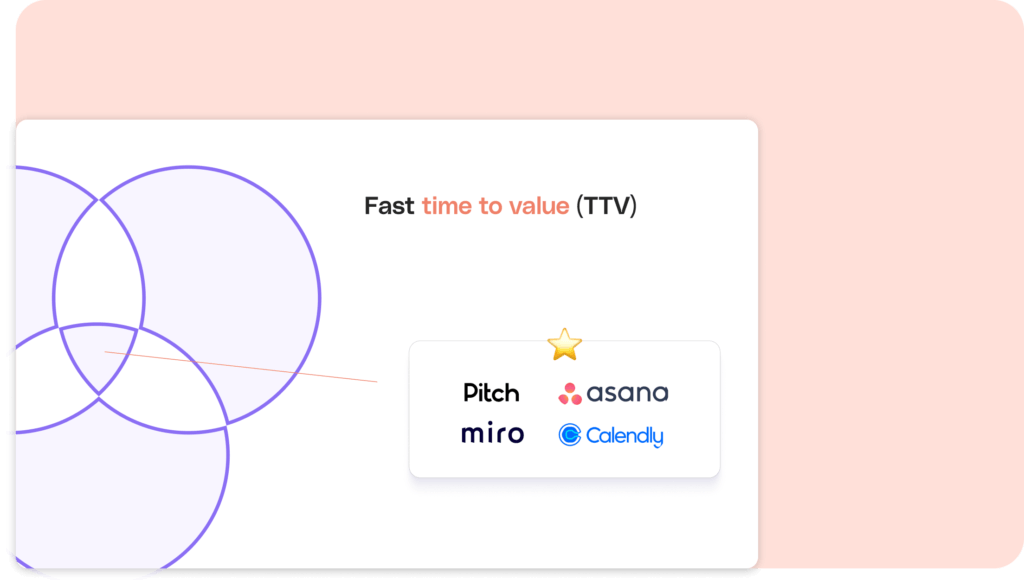The Rise of Referral Programs in B2B SaaS
“Share Dropbox with your friends, get 500MB of free storage.” This legendary referral loop is most likely very familiar to most of you. Within just a few months Dropbox could skyrocket their user numbers by 3900%. In 2009. Now a few years in, Dropbox is one of Silicon Valley's most iconic digital SaaS brands. Referral programs have become a staple in the B2C sector, yet their full potential remains largely untapped in B2B.
B2B SaaS is witnessing a transformative era. Product-led growth (PLG) reshapes purchasing decisions and journeys, blending the once clearer lines between B2B and B2C channels. Gone are the days when software acquisition was a linear journey - now, purchasing decisions are influenced by a wide spectrum of actors - from personal networks to professional partners.
Understanding and leveraging these dynamics is key. Nielsen's research underscores that 88% of respondents generally trust referrals more for purchasing decisions over other channels. In comparison, 34% of B2B SaaS champions see word-of-mouth as the most preferred growth channel (Source: BCG). The impact of referrals is profound, with 84% of B2B buyers influenced by them (Source: Edelman Trust Barometer).
In addition, rising CACs for legacy channels (Paid, SEO, etc.) and the challenging macro environment (e.g. energy crisis, inflation) require SaaS companies to look for more cost-efficient growth channels.
Why it matters - The power of referrals
Every SaaS company should leverage referral programs and have a powerful referral marketing strategy. Why? Because referrals usually come with relevant advantages:

But be careful. If you do not approach this new growth channel strategically, it might also come with unpleasant consequences:
- Losing organic growth to referral growth
- Diluting the perceived value of the product
- Not reaping the benefits because of the wrong incentive structures
- Having high sunk costs in managing a complex referral program
It is more critical than ever to emphasize the need for a strategic approach to referrals, blending the power of different referral programs - user experiences with partner networks to amplify brand reach, credibility, and conversions.
This hybrid dynamic is gaining traction in B2B PLG, yet, it’s hard to distinguish between user and partner referrals.
This article should answer the following questions:
- What referral programs are most effective for B2B SaaS?
- What are their differences?
- Which referral program should you consider?
- Why and when does it make sense to layer multiple programs?
The Different Categories of B2B Referral Programs
B2B referral programs can have different shapes and forms. Generally, we differentiate between user and partner referrals. Partner referrals can be subcategorized by affiliate, influencer, and value-added referral programs (VARs).
Both growth channels are targeted to amplify a product's word-of-mouth by using social proof psychology. For example, user referrals leverage a friend’s recommendation, whereas influencers build on personal brand equity to promote a product.
User referrals tend to secure strong conversions at the lower end of the acquisition funnel thanks to 1-to-1 peer recommendations. You trust your peers more than anyone else.
Conversely, affiliates and influencers are more prone to generate buzz, especially at the top of the funnel, even though you will also find micro influncers with highly targeted audiences. In contrast, value-added referrers (VAR, service providers that distribute your product) are great for niche products combined with professional service offerings (e.g. accounting software). In any case, It all comes down to ideal-customer-profile (ICP) - partner audience fit.
To better understand the differences and where each program plays a role, let’s dive into the specifics of each program.
User Referral Programs
User referral programs target the product's existing users and incentivize them to share it with their network of friends and business contacts; mostly on a 1-to-1 basis. For example, Typeform encourages its existing customers to refer friends and peers to try their leading online form and survey software.
| Category | Aspect | Details |
|---|---|---|
| ✅ Strengths of user referral programs | Trust and Credibility | Utilizes psychology of trust in existing relationships, which have a significant impact on decision-making |
| Cost-Effective | More affordable customer acquisition than traditional marketing (LTV:CAC 3:1) | |
| Higher Conversion Rates | Leads from referrals often convert more quickly due to pre-established trust | |
| Increased CLV | Customers from referrals tend to have higher lifetime value | |
| Boosts Brand Perception | This boost can lead to positive reviews and improve brand image | |
| ❌ Challenges of user referrals | Complex Management | Requires careful planning and ongoing maintenance (payouts, tax & compliance, optimization) |
| Misaligned Incentives | Ineffective if incentives don't match target audience interests (in-product rewards vs. private payouts) | |
| Depends on Customer Engagement | Success is tied to current users’ engagement, the program's in-product discoverability and/or marketing’s capacity to communicate on it. | |
| Risk of Brand Dilution | Aggressive or poorly executed programs may harm brand perception. | |
| SaaS-specific | User referrals are not meant for everyone. |
Best-in-Class Example: Typeform
Typeform has a great referral-product fit since they already have a large number of users who have a network worth sharing. Additionally, their tool has a high level of product engagement through company-wide daily/ weekly usage and fast time to value due to their freemium business model.

On top of that, they have adopted state-of-the-art user referral best practices.
- Seamlessly embedded: Directly integrated into their UX, easily accessible.
- Ease of Use: Easy referral link sharing for both free and paid users via a referral widget and multiple channels.
- Recurring rewards: Ongoing 15% monthly commissions up to $500 per referral leading to recurring engagement and natural fraud prevention.
- Unlimited Referrals: No cap on the number of people one can refer, encouraging widespread promotion.
- Effective Promotion: Launch across various touchpoints (e.g. social, mail), plus a compelling referral landing page with all relevant information.
Affiliate Referral Programs
Affiliate programs target a broader audience beyond existing users - made of small-to-medium-size creators - and incentivize them to share it with their social audiences through sponsored content or link placements on a 1-to-many basis.
Affiliates are external brand representatives who earn, for instance, a revenue share of each sign-up or revenue generated by regularly creating content around your product. For example, Fellow encourages their ambassadors to create content around its features to spread reach and brand awareness; whether those creators are Fellow users or not.
| Category | Aspect | Details |
|---|---|---|
| ✅ Strengths of affiliate referral programs | Extended Reach | Access new audiences through affiliates’ networks. |
| Cost-Effectiveness | You pay for performance, making it a cost-effective marketing strategy compared to ramping up your own sales team. | |
| SEO Benefits | Backlinks from affiliates can improve your website's SEO ranking. | |
| Scalability | Affiliate programs can easily scale, growing as your pool of affiliates expands without significantly increasing marketing costs. | |
| Trust Building | Recommendations from trusted affiliates can enhance your product's credibility, leveraging the trust they've built with their audience. | |
| ❌ Challenges of affiliate referral programs | Quality Control | Maintaining control over how your product is presented can be challenging. |
| Dependency | Relying heavily on affiliates for sales can make your business vulnerable to changes in affiliate strategies or priorities. | |
| Complex Management | Requires effort to track sales, manage commissions, and support affiliates. | |
| Commission Costs | While cost-effective, commissions can add up, especially if a large portion of sales comes through affiliates. This needs to be balanced against customer lifetime value. | |
| Fraud Risk | Potential for unethical practices requires fraud monitoring systems. |
Best-in Class Example: Fellow
Fellow.app demonstrates a great example of a state-of-the-art affiliate program. Their AI-based meeting recording tool is made for exponential growth and has a wide range of potential target audiences, thus easily shared via affiliates.
- Attractive reward scheme: One-off reward, plus commission based up to 10.000$ per new referred customer.
- Resource Availability: Access to promo materials and product insights.
- Real-Time Analytics: Clear tracking and reporting overview in one portal.
- Community Engagement: Forums and events for affiliates to connect and meet with other Fellow ambassadors.
- Effective Promotion: Affiliate referral landing page contains all relevant information (step-by-step guide, reward calculation, promo materials etc.) with a simple application process.
Influencer Referral Programs
Influencers can be seen as the highest end of affiliate programs, targeting large-size creators that can have niche celebrity status, and hence higher reach and engagement. For example, RevenueHero partnered with Dave Gerhardt, a renowned B2B marketing influencer with over 160,000 followers, to promote their product on LinkedIn. Dave Gerhardt (Exit Five) offers various partnership options, including an influencer campaign or sponsored content. In contrast to affiliate engagements, these models usually have an upfront charge and are not performance-based. The focus is more on awareness than on direct conversion generation.

| Category | Aspect | Details |
|---|---|---|
| ✅ Strenghts of influencer referral programs. | Extended Reach | Access new audiences through influencers’ followers and benefit over months as the influencer grows. |
| Enhanced Credibility | Leverage influencers' trust within their target audiences. | |
| Authentic Promotion | Influencers create genuine content that resonates. | |
| High Engagement | Influencer content often sees high interaction rates. | |
| Targeted Marketing | Reach specific demographics aligned with the brand. | |
| ❌ Challenges of referral programs | Higher Costs | Top influencers can be expensive to partner with. |
| Variable ROI | Difficult to predict the return on investment. | |
| Quality Control | Challenges in maintaining consistent brand messaging. | |
| Dependence on Influencers | Brand image partially in influencers' hands. | |
| Market Saturation | Overuse can lead to audience fatigue. |
Best-in-Class Example: tl;dv
Tl;dv’s AI-based meeting transcription tool sets itself apart through a very prominent placement of its influencer program. It’s accessible via the homepage navigation bar and has a very clear value proposition.
- Generous Rewards: Impression-based and up to $700 for posts about tl;dv.
- Flexibility: No mandatory revision cycles, allowing genuine content creation.
- Wide Platform Range: Suitable for influencers on LinkedIn, TikTok, Twitter, Instagram.
- Media Kit: tl;dv provides example posts and a media kit for their influencers.
Value Added Referral (VAR) Programs
| Category | Aspect | Details |
|---|---|---|
| ✅ Strengths of VAR programs | Enhanced Product Value | Offers additional benefits or services, increasing overall product appeal. |
| Customer Loyalty | Encourages repeat business by adding exclusive perks and low likelihood of churned customers. | |
| Differentiation | Sets the product apart from competitors. | |
| Positive Word-of-Mouth | Satisfied customers are more likely to refer others. | |
| ❌ Challenges of VAR programs | Increased Costs | Additional services or perks can raise operational expenses. |
| Complexity | More difficult to manage and communicate effectively. | |
| Customer Perception | Risk of added value being perceived as low or irrelevant. | |
| Dependence on Value-Added Elements | May shift focus from the core product or service quality. |
Best-in-Class Example: sevDesk
SevDesk provides a state-of-the-art VAR program targeting SME companies, particularly service companies (e.g. tax advisors) that use their tool for various clients and adding value to multiple parties.
- SevDesk VAR program is natively embedded into their solution
- Reward set-up is straightforward, for every successful referral the VAR gets a 60€ payout
- Targeting tax advisors is an accelerator in itself since every tax advisor works for multiple accounts
Key Considerations of Referral Programs
Now that we understand the main types of referral programs, we will examine some key considerations to have the foundation on what companies are suited for each type of referral program:
- KPIs
- Unit Economics
Measuring Success: Key Performance Indicators
For the four categories of referral programs, different KPIs to measure include:
- User Referral Programs: Activation rate, sharing rate, number of new users, purchase rate from user referrals, total user referral ARR.
- Affiliate Referral Programs: Click-through rate (CTR), conversion rate, affiliate earnings per click (EPC), total affiliate referral ARR.
- Influencer Referral Programs: Engagement rate on sponsored content, conversion rates from influencer referrals, brand awareness metrics (#impressions, #shares, etc.), total influencer referral ARR.
- VAR Programs: Number of qualified leads, conversion rate from VAR referrals, and customer lifetime value (CLV) of customers acquired through VARs, total VAR referral ARR.
Eventually, the most important KPI is New Revenue Growth from XYZ per month [in %] to compare this channel to other traditional marketing channels.

Unit Economics
Exploring the economic underpinnings of user, affiliate, influencer, and VAR referral programs reveals what type of program might be the right one for you to start with:
| Program Type | Costs | Benefits and ROI Potential |
|---|---|---|
| User Referral Programs | Costs primarily involve rewards for referrals and program management. | Cost-effective due to leveraging existing users; High ROI potential from low acquisition costs and high conversion rates; minimal internal resource effort if using a SaaS platform. |
| Affiliate Referral Programs | Costs include commissions to affiliates and program administration, internal partner management resources. | Scalable growth with controlled costs; balancing commission rates against customer lifetime value. |
| Influencer Referral Programs | Higher upfront costs due to potential influencer fees. | Potential for high returns through increased brand visibility and customer acquisition; ROI depends on influencer alignment and audience engagement. |
| VARs | Higher upfront investment in partner training and onboarding. | High partner retention due to integration of software sales with partner services; revenue sharing aims to boost customer lifetime value through broad market penetration and product integrations. |
Each category's economics must align with the SaaS company's overall strategy, customer acquisition cost (CAC), and CLV for sustainable growth.
Now that you have learned some key considerations for the 4 categories of B2B referral programs, let’s move on and see which ones align well with your company’s characteristics.
Selecting and sequencing the right referral program
Selecting the optimal referral program depends on various factors, such as a company's user base size, business model, and strategic growth goals, with each program offering unique advantages for scaling and market penetration.
In general, picking the right program depends on your:
- Monthly active user (MAU) basis
- Product time-to-value (Freemium, Free Trial, Sales-Led)
- Customer lifetime-value
- Marketing budget
- Resources
User referral programs are best for companies with an established user base (+1,000 MAUs), especially prone for freemium and free-trial SaaS companies. They leverage existing users' networks for growth.
Affiliate referral programs suit SaaS companies of all sizes. Still, they are particularly effective for those with a Freemium or Free Trial model, which aims to scale quickly and efficiently. Additionally, products with a certain search volume on their products are perfectly suited if you place an affiliate link on a blog article on Google leading to the customer product.
Influencer referral programs are more suited to SaaS companies with substantial marketing budgets and looking to create a significant impact quickly. This approach works well with high-value freemium models. They are best for “consumerized”, horizontal products everyone can use (e.g. fellow).
VARs are suitable for any SaaS size, excelling with sales-led or freemium models. They're best for companies seeking enhanced product integration or customization through partnerships, offering a broader or more specialized market appeal by incorporating partner services into their core offerings.

Synergies between programs
User referral programs can effectively leverage the organic reach of existing users while expanding market presence through affiliates, optimizing both engagement and reach (Example: Fellow).
Pairing user referrals with influencer campaigns can significantly boost brand visibility and trust, using influencers' credibility alongside existing users' personal endorsements (Example: tldv).
The affiliate, influencer, and VAR partner acquisition through a highly visible in-product user referral program can be especially cost-efficiently accelerated.
Partners that happen to be product users can be acquired and activated through an in-product user referral program. They can then be uplifted to a suitable partner program with oftentimes more attractive incentives and access to in-depth analytics.
Success factors launching a program
Once you’ve decided on the right referral program mix, it’s all about a successful launch. We will provide tactical step-by-step guides on each of the programs. Some critical factors across the programs are
- Product-Program-Fit: The referral program must align with the product and resonate with potential referrers.
- Appropriate Incentives: Incentives should be attractive and relevant to the audience, reflecting the product’s value and always two-sided (including a benefit for both the referrer and referee).
- Visibility: Promote the program prominently through a dedicated landing page to enhance accessibility and engagement.
- Supportive assets: Provide referrers with resources like a media kit and examples, facilitating effective promotion. Remove barriers and make sharing as easy as possible.
- Active engagement: Maintain regular updates and communication to nurture and motivate referrers.
- Scale & maintain: Be aware of tax, legal, and KYC compliance when paying your referrers.
Closing Thoughts
B2B referral partner programs can be engines of scalable, cost-efficient growth, expanding your top-of-the-funnel. When these programs join forces with user referrals, which target existing users to grow the bottom-of-the-funnel virality, the result is a compounding, amplified viral flywheel.
Having the right strategy, incentives, GTM approach, and tooling to set up custom journeys that resonate with your unique value proposition and needs is key. As most folks in tech know, “Ideas are cheap, execution is what matters.” We hope this article is a good step forward in chosing the right referral programs for your company. To get more tactical, we’ve drafted step-by-step guides with industry leaders on each program:


Resources
Related Guides

How to use incentives to drive velocity of your growth loops
This article is written together with Wes Bush, founder and CEO of ProductLed and one of the ...

B2B Referral Program Examples
Uncover B2B referral program examples and learn from best practices how other companies utilize ...

B2B Referral Program KPIs (2023)
Dive into the world of B2B referral program KPIs & benchmarks. Explore successful program ...



